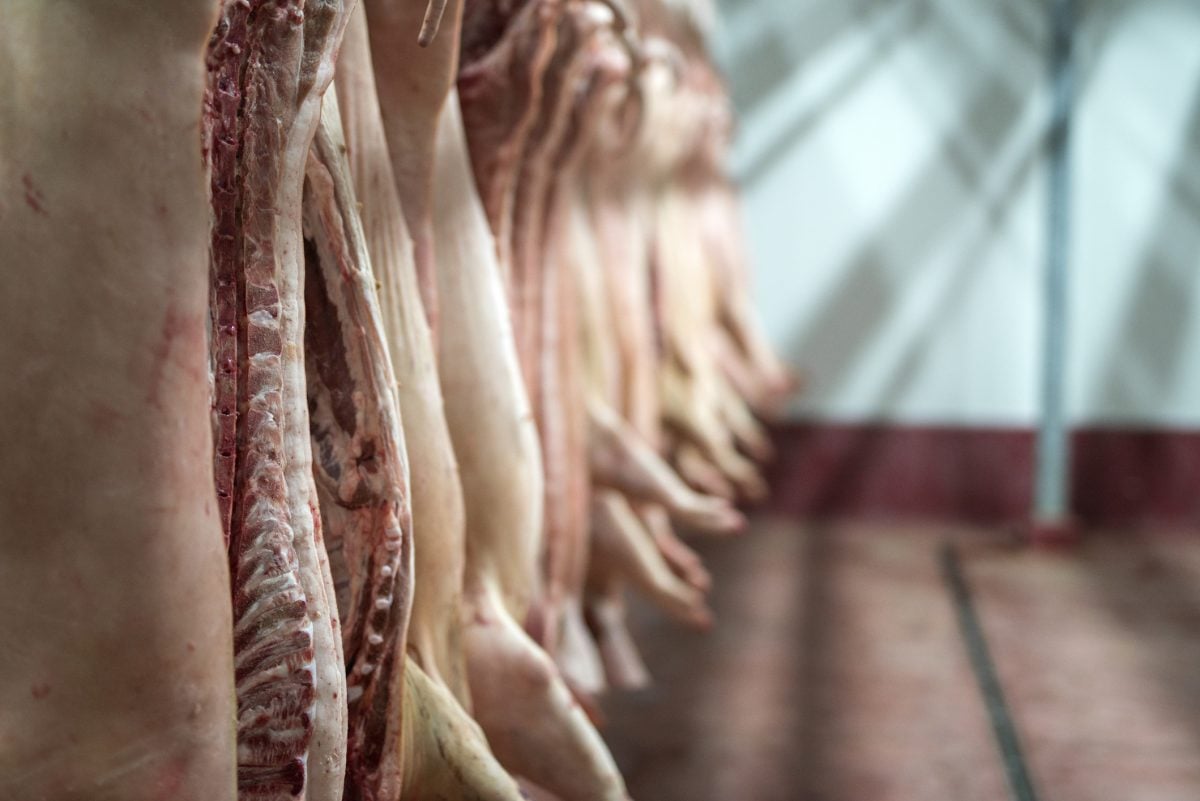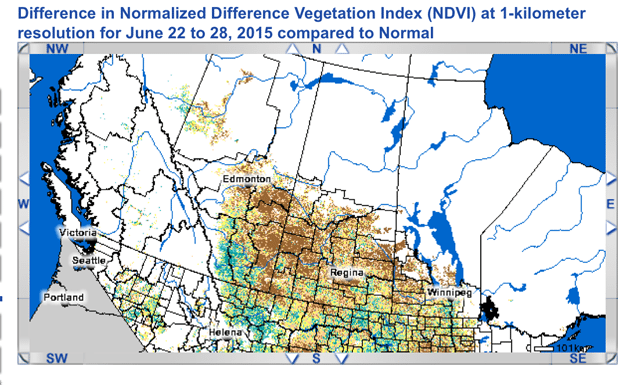New crop canola edged higher in light trade Friday, a day when U.S. markets were closed in advance of the July 4 holiday.
Prices were supported by the hot, dry weather that is cutting into yield potential across a broad swath of the Prairies.
Most traded November canola closed at $533.50, up 40 cents.
On the week, November canola gained $9.90 a tonne.
July closed at $538.40, down $2.90 and on the week it was up $16.60.
Some Canadian analysts are now penciling in a canola crop of less than 12 million tonnes, well down from the official Agriculture Canada forecast for 14.9 million.
Read Also

U.S. livestock: Cattle slip back, hogs gain
Chicago cattle futures slipped back on Friday after Thursday’s pause. Hog futures crept upward. Most-active December live cattle futures closed…
The Agriculture Canada forecasts are completely out of date given the dry weather and it could be a shock to the market when they have to start lopping off four or five million tonnes or more from Canada’s expected wheat crop.
Manitoba’s northern grain belt and northeastern Saskatchewan could get welcome rain on the weekend, but it is a mostly dry forecast for the rest of the Prairies until the following weekend.
The vegetation index map that appears at the top of this page is from the Agriculture Canada crop assessment program.
Brown indicates areas that are below normal to well below normal. Yellow indicates normal and turquoise above normal. Eastern Alberta and western Saskatchewan are in the worst trouble although there are plenty of other areas as well.
Canadian crushers increased their operations in the last week, even with poor crush margins. The Canadian Oilseed Processors Association said members crushed a total of 155,523 tonnes of canola in the week ending July 1, up 2.6 percent from the week before.
That represented a crush capacity of almost 78 percent, still down from the year-to-date average of 81.6 percent.
Today’s Saskatchewan crop report said conditions are deteriorating.
Canola conditions were as follows (with ratings from two weeks ago in brackets): poor to very poor 25 percent (17), fair 29 percent (36) and good to excellent 46 percent (47).
The condition of the spring wheat crop is as follows: poor to very poor 18 percent (10), fair 30 (33), good to excellent 54 percent (57).
The condition of durum declined sharply: poor to very poor 38 percent (12), fair 33 percent (47), and good to excellent 29 percent (41).
The hot weather in Europe continues with temperatures in the 30s C and some places as hot as 40 C.
The crop was in excellent condition before the heat, so yield reductions are from what were expected to be high levels.
Reuters reported Agritel has cut its EU soft wheat estimate for 2015 by two million tonnes since mid-June to 138.5 million tonnes. Fellow consultancy ODA Group has lowered its outlook to 137.3 million tonnes compared with 140 million expected a month ago.
On Thursday Reuters reported that Russian officials were considering a five percent reductions in their crop due to regional dry conditions.
The Canadian dollar at noon was US79.55 cents, down from 79.58 cents the previous trading day. The U.S. dollar at noon was C$1.2571.
The Toronto Stock Exchange’s S&P/TSX composite index closed up 44.40 points, or 0.3 percent, at 14,682.39.
On the week, the TSX was down 0.8 percent.,
Wall Street was closed Friday, but at the close Thursday, the Dow on the week was down 1.2 percent.
Winnipeg ICE Futures Canada dollars per tonne
Canola Jul 2015 538.40 -2.90 -0.54%
Canola Nov 2015 533.50 +0.40 +0.08%
Canola Jan 2016 535.40 +3.00 +0.56%
Canola Mar 2016 533.00 +3.60 +0.68%
Canola May 2016 529.30 +3.70 +0.70%
Milling Wheat Jul 2015 250.00 unch 0.00%
Milling Wheat Oct 2015 248.00 unch 0.00%
Milling Wheat Dec 2015 248.00 unch 0.00%
Durum Wheat Jul 2015 298.00 unch 0.00%
Durum Wheat Oct 2015 298.00 unch 0.00%
Durum Wheat Dec 2015 303.00 unch 0.00%
Barley Jul 2015 209.40 unch 0.00%
Barley Oct 2015 204.40 unch 0.00%
Barley Dec 2015 209.40 unch 0.00%














